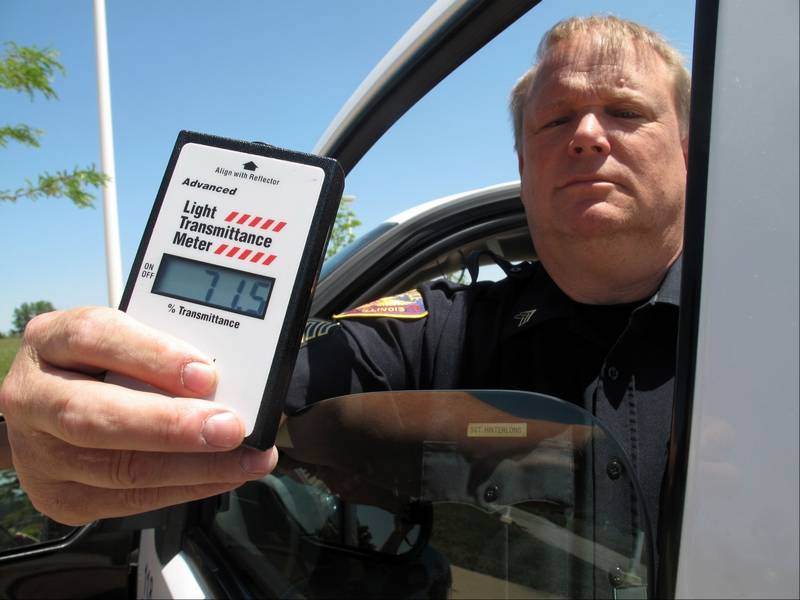Florida Window Tinting Laws
The state of Florida has very specific window tint laws for vehicles. Every state in the United States has its own percentage of darkness and reflection that your car windows are allowed to have. But there are also other specific window tint regulations you may need to know about.
Below we’ll list all relevant information pertaining to tinted windows in Florida.
Florida window tint laws:
Florida window tint laws restrict windshield tint to above AS-1 line. Front side windows may have 28% VLT, and other windows behind driver seat may have 15% VLT on sedans. On multi-purpose vehicles, back side windows and rear window may have 6% visible light transmission.
There are other regulations as well, including tint reflection, restricted colors and more. See below for full Florida tint laws information!
Window tint darkness
The amount of light that can pass through your car windows is measured in percentages (called VLT). Make sure your tinting film is up to these standards.
Florida window tinting laws have different regulations for passenger and multi-purpose vehicles. Make sure you read the laws carefully and check which apply to your vehicle.
- Windshield may only have transparent tint applied on AS/1 portion (top 5 inches).
- Front side windows must pass through more than 28% of light inside your car (28% VLT).
- Back side windows may have 15% VLT on passenger vehicles, or 6% VLT on MPV (bus, van, SUV, etc.; more info below).
- Rear window can have 15% VLT on passenger vehicles, and up to 6% VLT on MPV.
VLT stands for Visible Light Transmittance. 15% VLT means 15% of total light must pass through windows, or no more than 85% of total light may be blocked. Florida allows up to 3% tolerance.

Passenger vehicles and MPV – Multi-Purpose Vehicles have different window tint darkness restrictions behind driver. You can check your vehicle type by finding a federal ID label located on door frame next to driver’s seat.
Official sources and references:
- Florida Statutes (Title XXIII – Motor Vehicles, Chapter 316 – State Uniform Traffic Control; see §316.2951 to §316.2956).
- Florida Statutes 316.29545 – Medical Exemptions
- Florida Sunnscreening Medical Exemption – application form, .pdf file
Window tint reflection
Some tinting film can reflect incoming light, which further reduces glare and heat. Florida does not allow using tinting film with any mirrored or metallic appearance above 25% for front side windows, or 35% for back windows and back windshield.
For the safety of other drivers, it is never recommended to use window tint with higher than normal reflection. This is especially important in sunny states like Florida.
Side mirrors
Your vehicle must have dual exterior side mirrors if any windows behind driver position are tinted.
Restricted tint colors
Florida window tint laws restrict the color of tinted windows. It is not legal to use any window tint film which alters the normal window color.
Medical exemptions
Some US states allow different window tint percentages due to certain medical conditions. You can submit an application to use darker window film in case of medical conditions such as porphyria, xeroderma pigmentosa, lupus, or severe photosensitivity.
Florida car tint medical exemption regulations are found in Section 316.29545 of Florida Statutes. Medical exemptions are issued by Medical Advisory Board of Florida Department of Highway Safety and Motor Vehicles.
Medical exception application requires a $6.25 fee per each applicable vehicle but has no expiration. Once issued, your exemption certificate will only become invalid upon the sale or transfer of vehicle.
Fill-able window tint medical exemption form can be found on Florida Department of Highway Safety website (.pdf file).
Penalties for illegal tinting
Florida window tint which is not permitted by laws is considered a non-moving violation. This is a non-criminal traffic infraction, punishable as detailed in Florida Statutes, Chapter 318.
Unlike most states, Florida also has specific penalties for persons who install or sell illegal tint film. Installation or sale of window film which is not within Florida tint law regulations is considered a 2nd degree misdemeanor.
Other privacy devices
Florida tinting laws permit using drapes, blinds, curtains, or other similar window coverings only on back side windows. These items must always be in an open and secure position while vehicle is on public roads.
Our Cracked Windshield Laws and Window Sticker Laws articles may give you further information to ensure you don’t break the law with window obstructions.
Window film certificate
All installers or sellers of sunscreen materials must provide a label stating that materials comply with Florida tint laws. Label must include trade name of the material, as well as business name of installer or seller.
These labels must be installed inside left door jamb of your vehicle.
Some towns or counties in Florida may have their own special regulations about window tinting, so if you’re in doubt about anything be sure to check with your local law enforcement or DMV offices.

